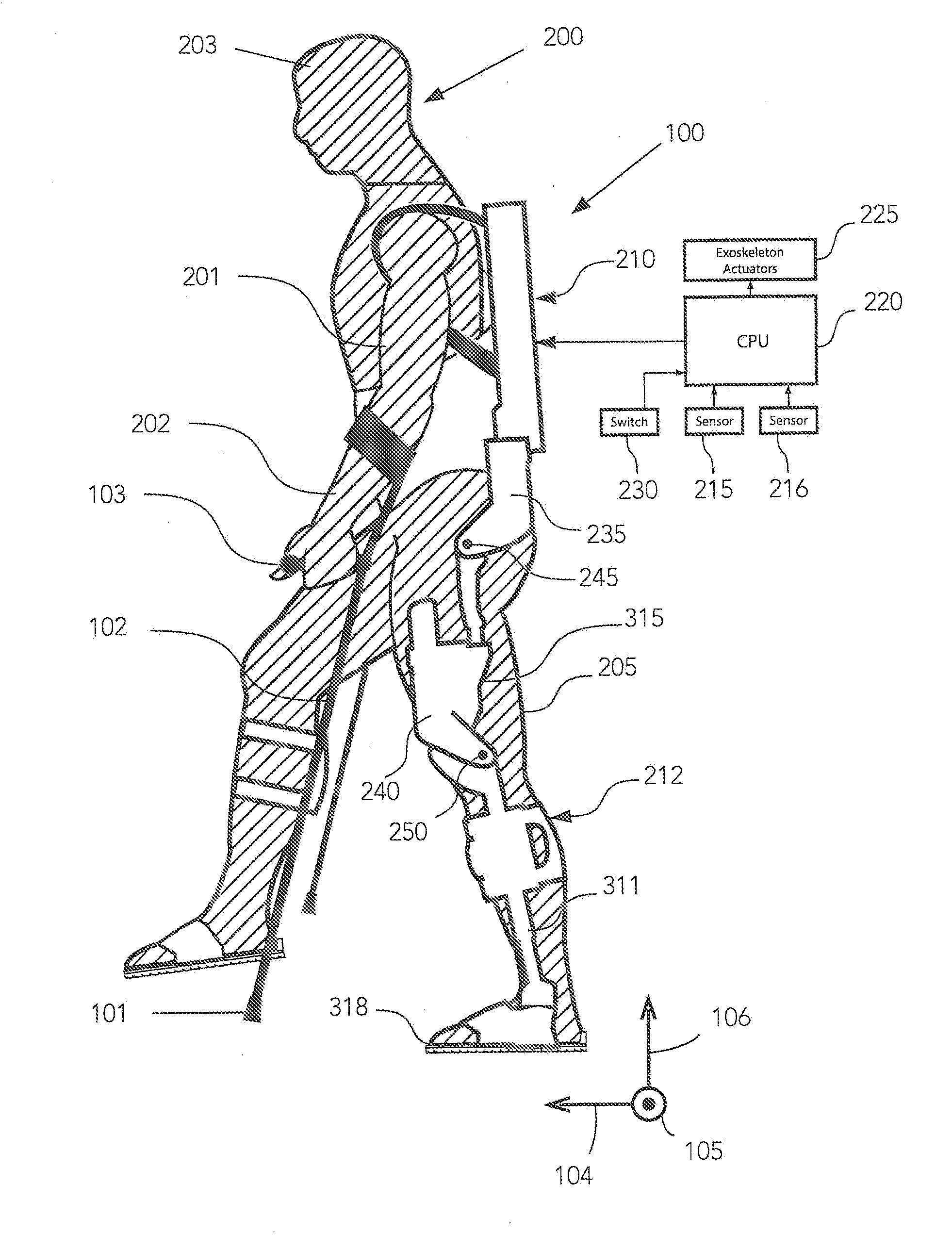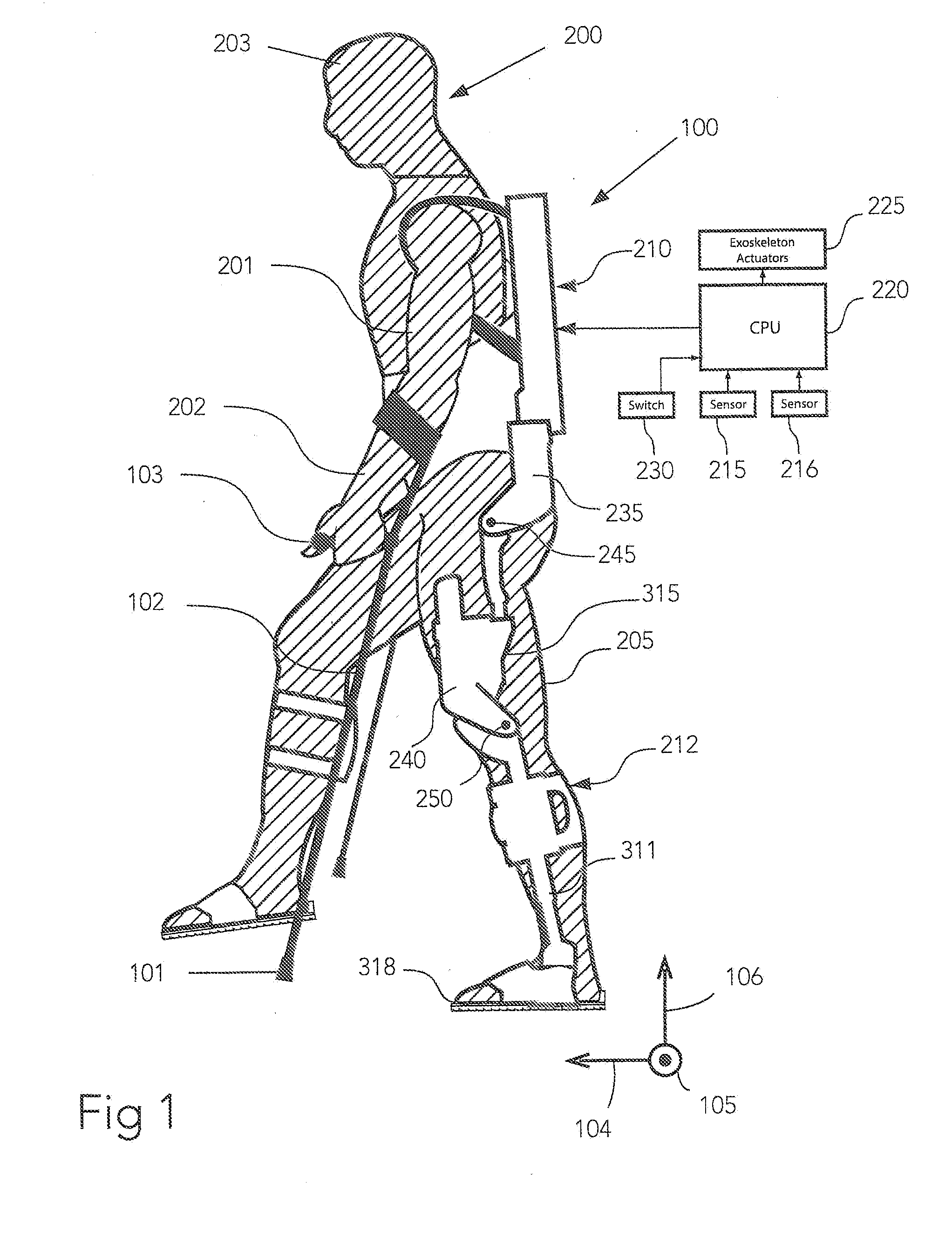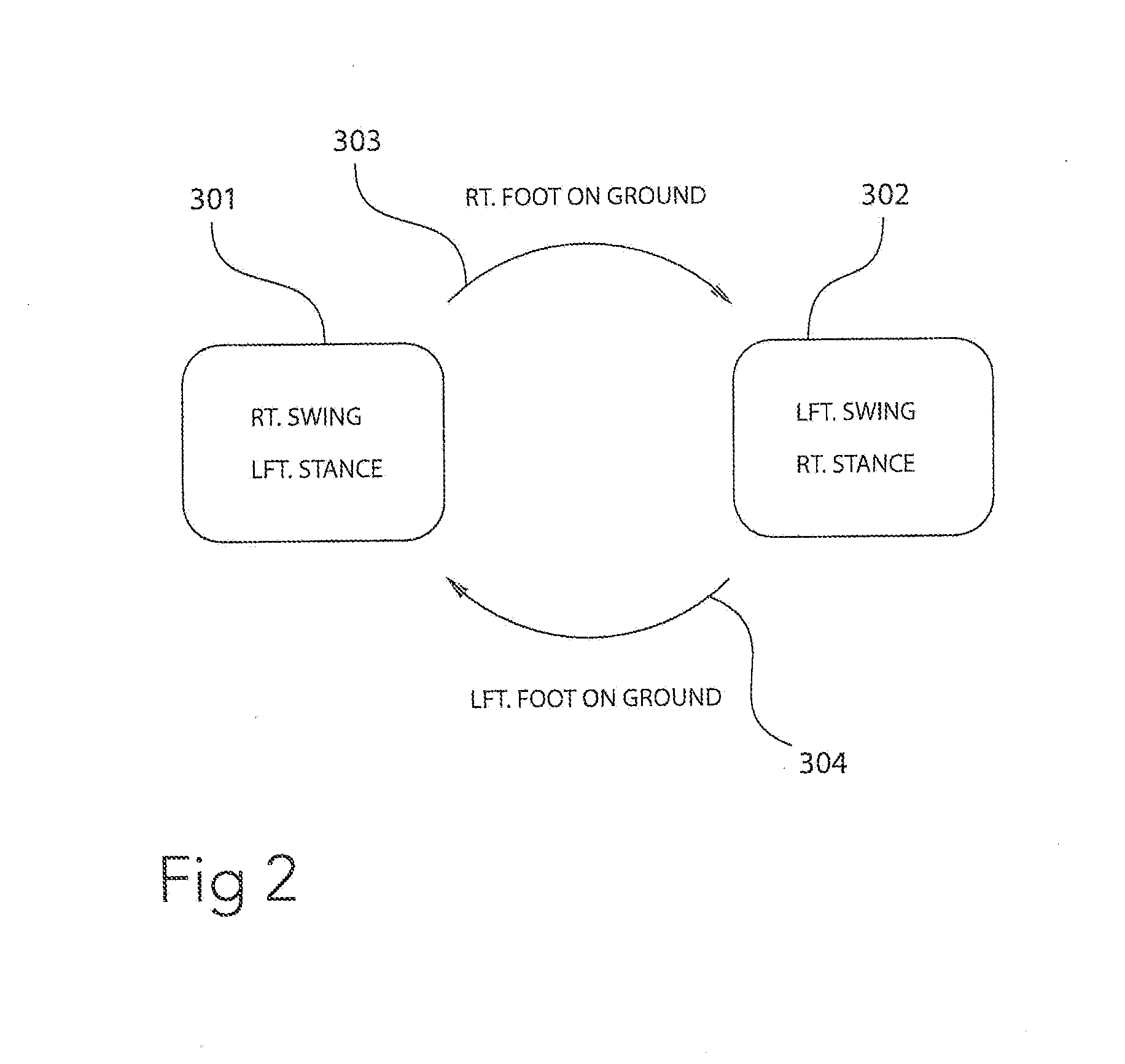Human Machine Interface for Lower Extremity Orthotics
a human machine and orthotic technology, applied in the field of human machine interface for lower extremity orthotics, can solve the problems of inability to initiate motion independently, and the hands may not be able to push buttons
- Summary
- Abstract
- Description
- Claims
- Application Information
AI Technical Summary
Benefits of technology
Problems solved by technology
Method used
Image
Examples
second embodiment
[0041]This embodiment of the invention discussed so far works most reliably if the knee flexion angle is small. A second embodiment considers only the thigh angle of the stance leg (forward leg during double stance) to determine that the user is indicating a forward step is desired. In a similar manner, a threshold is set for the thigh angle that determines that the person is shifted forward and prepared to take a step.
third embodiment
[0042]A third embodiment is to consider the line formed by the hip and ankle of the stance leg; this embodiment also helps in the event that the knee flexion angle is small. The exoskeleton will transition into a state that corresponds to taking a step (e.g., the right swing state 401 in FIG. 3) when the angle of the line exceeds a threshold. Equivalently, the exoskeleton controller may decompose the hip-ankle line into a forward and a lateral component and only transition to stepping when the forward component and the lateral component exceed respective thresholds.
[0043]These additional embodiments can all be accomplished by utilizing the global position of the joint as well. The hip joint location can be calculated to determine the forward position of the hip. The knee position can be calculated to determine if the knee is forward.
[0044]In any of these embodiments, the angle threshold of the leg may be determined by a fixed angle or may be dependent on the velocity of the walking....
PUM
 Login to View More
Login to View More Abstract
Description
Claims
Application Information
 Login to View More
Login to View More - R&D
- Intellectual Property
- Life Sciences
- Materials
- Tech Scout
- Unparalleled Data Quality
- Higher Quality Content
- 60% Fewer Hallucinations
Browse by: Latest US Patents, China's latest patents, Technical Efficacy Thesaurus, Application Domain, Technology Topic, Popular Technical Reports.
© 2025 PatSnap. All rights reserved.Legal|Privacy policy|Modern Slavery Act Transparency Statement|Sitemap|About US| Contact US: help@patsnap.com



